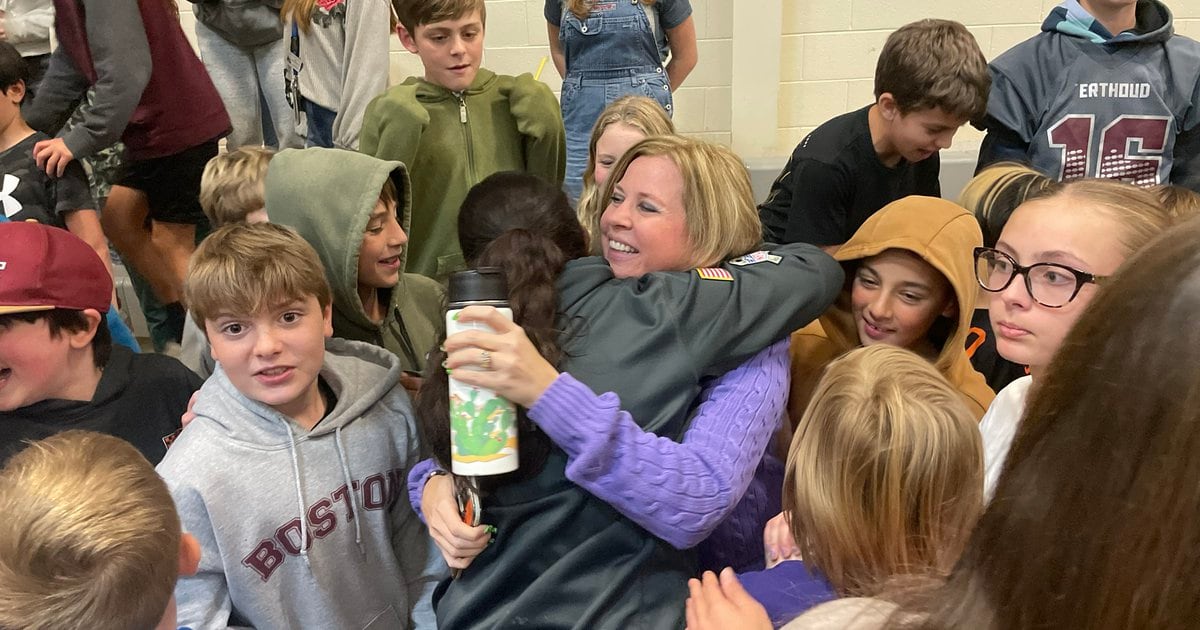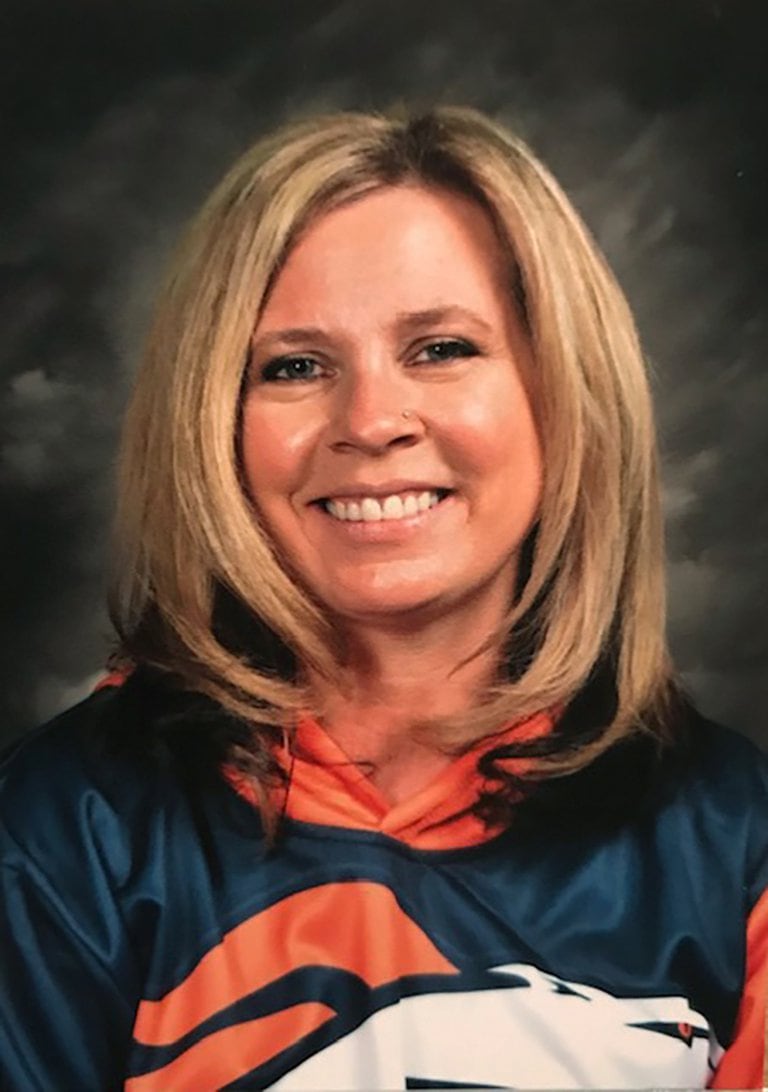During this summer, a team of students from MIT embarked on a journey to the sou …
Colorado’s Teacher of the Year Empowers Middle School Students to Find Their Voices
Jennifer Livingstone

At the age of 11, Jessica May’s family decided to foster a baby who had suffered from severe neglect and was completely silent.
However, May’s mother had a plan to help Baby Isabella start cooing, babbling, and laughing like any other 1-year-old. The whole family showered her with love and attention, and eventually, the little girl caught up on all her developmental milestones.
Now a family and consumer sciences teacher at Turner Middle School in Berthoud, Colorado, May finds fulfillment in helping her students find their voices as they navigate the challenging journey from childhood to adolescence.
All of her students are like her own “Baby Isabellas,” according to May. She teaches them important lessons in child development, budgeting, and laundry.
Recently named Colorado’s 2024 Teacher of the Year, May sat down with us to discuss her upbringing with nearly 200 foster siblings, how she supported her students through a classmate’s death, and her approach to parent-teacher conversations.
This interview has been lightly edited for length and clarity.
Was there a specific moment when you realized you wanted to become a teacher?
No, there wasn’t. I always had a strong desire to spend time with my teachers. I even gave assignments to my dolls and stuffed animals and graded them while they were on recess. Teaching simply came naturally to me at a young age.

A portrait of Jessica May, Colorado’s 2024 Teacher of the Year. (Image Courtesy of Jessica May)
How did your own experiences in school shape your teaching approach?
I always loved school and had a strong desire to build personal connections with my teachers. Growing up, I would constantly ask them questions about teaching, seeking their advice to discover the kind of teacher I aspired to be.
In fact, I still maintain contact with many of them. Just the other day, my first-grade teacher sent me a congratulations card for winning Teacher of the Year. During my first year as a teacher, I was even paired up with my former junior high school teacher, and now we’re best friends!
You mentioned that you like to share stories with your students to connect their lessons with real-life experiences. Can you provide an example?
My mother devoted her life to being a foster parent, starting when I was only 3 years old. By the time I graduated from the University of Northern Colorado, I had already lived with 189 foster brothers and sisters. During that time, I learned a great deal from my mother about children who have experienced trauma. One of the stories I share with my students is about Baby Isabella.
When I was 11 years old, my mom informed me that we would be welcoming a 12-month-old baby girl into our family, even though she was the size of a 6-month-old. She explained that Isabella had learned early on that crying wouldn’t lead to anyone responding or coming to her aid – no one would change her diaper, feed her, or even hold her. Consequently, she learned to stop crying. As a result, she didn’t coo, babble, lift her head, or reach developmental milestones like rolling over, crawling, or walking.
My mom told my older sister and me that our mission was to teach Baby Isabella how to cry again. The plan involved holding her constantly throughout the day, so we took turns caring for her while going about our daily routines at home. My mom reminded us to use baby talk, make eye contact when speaking to her, give her kisses, and sing to her. We did this for two weeks straight.
Then, my mom introduced “Step 2.” Every time we put Isabella down and she made any noise, we were to pick her up. We repeated this process until she finally understood that making a sound would elicit a response from someone. Soon, she began to coo and babble, gained weight, and reached developmental milestones like lifting her head, rolling over, and army crawling. She started smiling, giggling, and squealing. By the time she was adopted at 18 months old, Isabella had caught up to the average developmental milestones for her age group.
I share this story with my students because they’re in a transitional phase between being children and young adults in high school. People, even their families, often assume that they no longer want hugs, conversation, or to play family board games, and that they simply want to be left alone. However, that assumption is not accurate. They still desire to be acknowledged, heard, and engaged in conversations about life.
I believe I was meant to teach middle school because I have the opportunity to teach my students how to find their own voice like Isabella – to express their wants and needs.
Tell us about a favorite lesson you enjoy teaching. Where did you get the inspiration for it?
A few years ago, I had a close relationship with a seventh-grade student. I dedicated several hours each week to helping him overcome challenges both at home and in his social interactions at school. Tragically, he took his own life during that school year.
The loss of that student deeply affected me, as he was the first current student I had ever lost. I knew I had to take immediate action to support my students in their grieving process. I reached out to the district’s restorative justice representative and requested her assistance in facilitating Peace Circles for each of my classes the following day. The students desperately needed an outlet to express their emotions and engage in the healing process with their peers.
These circles turned into profoundly impactful experiences for everyone involved. They fostered feelings of safety, belonging, emotional expression, and community. My hope was to ensure that my students felt love, acceptance, and peace that day – and hopefully, for the rest of their lives.
Tell us about a significant moment – whether positive or negative – when communication with a student’s family influenced your perspective or approach.
I believe all teachers feel anxious when making phone calls to parents because the outcome can go either way. However, I’ve learned that when I need to address an issue by contacting a parent, it’s crucial to start the conversation by highlighting the child’s strengths or why I appreciate them. By beginning with a positive note, the parent or guardian understands that my intention is not to criticize their child, but rather to support their best interests. From there, we can have a meaningful conversation about how I can assist their student in becoming their best selves. As a result, I no longer feel like a nervous wreck when making these phone calls.
What are you currently reading for enjoyment?
I’m currently reading “Screwtape Letters” by C.S. Lewis. Although I’ve read this novel multiple times, it never ceases to amaze me. Lewis wrote this fictional story in 1942, yet many of the situations discussed by Screwtape – a demon who mentors his nephew – are still applicable today. It serves as a reminder to be mindful of my habits, thoughts, and actions on a daily basis.

